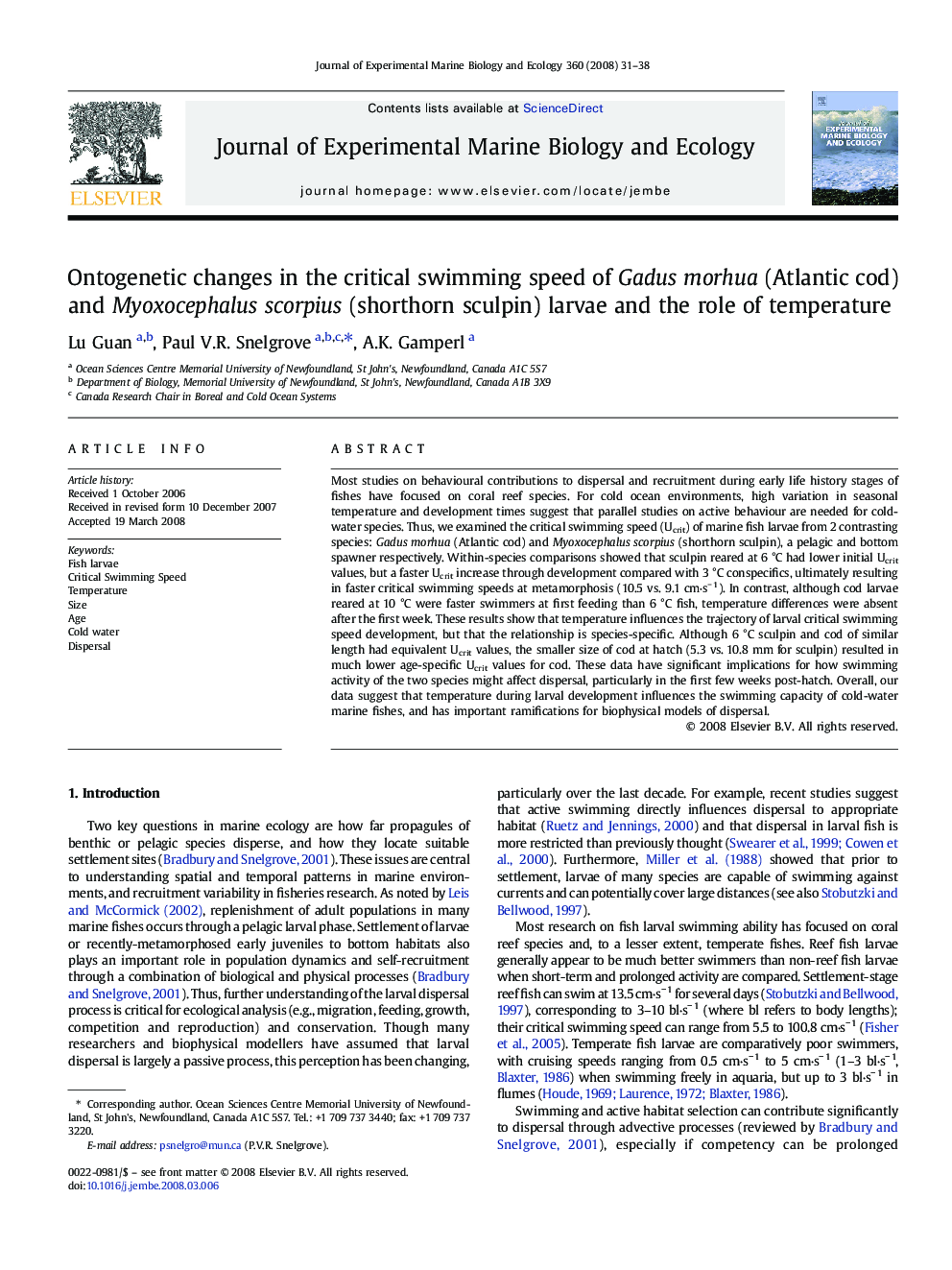| کد مقاله | کد نشریه | سال انتشار | مقاله انگلیسی | نسخه تمام متن |
|---|---|---|---|---|
| 4397306 | 1305878 | 2008 | 8 صفحه PDF | دانلود رایگان |
عنوان انگلیسی مقاله ISI
Ontogenetic changes in the critical swimming speed of Gadus morhua (Atlantic cod) and Myoxocephalus scorpius (shorthorn sculpin) larvae and the role of temperature
دانلود مقاله + سفارش ترجمه
دانلود مقاله ISI انگلیسی
رایگان برای ایرانیان
کلمات کلیدی
موضوعات مرتبط
علوم زیستی و بیوفناوری
علوم کشاورزی و بیولوژیک
علوم آبزیان
پیش نمایش صفحه اول مقاله

چکیده انگلیسی
Most studies on behavioural contributions to dispersal and recruitment during early life history stages of fishes have focused on coral reef species. For cold ocean environments, high variation in seasonal temperature and development times suggest that parallel studies on active behaviour are needed for cold-water species. Thus, we examined the critical swimming speed (Ucrit) of marine fish larvae from 2 contrasting species: Gadus morhua (Atlantic cod) and Myoxocephalus scorpius (shorthorn sculpin), a pelagic and bottom spawner respectively. Within-species comparisons showed that sculpin reared at 6 °C had lower initial Ucrit values, but a faster Ucrit increase through development compared with 3 °C conspecifics, ultimately resulting in faster critical swimming speeds at metamorphosis (10.5 vs. 9.1 cm·sâ 1). In contrast, although cod larvae reared at 10 °C were faster swimmers at first feeding than 6 °C fish, temperature differences were absent after the first week. These results show that temperature influences the trajectory of larval critical swimming speed development, but that the relationship is species-specific. Although 6 °C sculpin and cod of similar length had equivalent Ucrit values, the smaller size of cod at hatch (5.3 vs. 10.8 mm for sculpin) resulted in much lower age-specific Ucrit values for cod. These data have significant implications for how swimming activity of the two species might affect dispersal, particularly in the first few weeks post-hatch. Overall, our data suggest that temperature during larval development influences the swimming capacity of cold-water marine fishes, and has important ramifications for biophysical models of dispersal.
ناشر
Database: Elsevier - ScienceDirect (ساینس دایرکت)
Journal: Journal of Experimental Marine Biology and Ecology - Volume 360, Issue 1, 28 May 2008, Pages 31-38
Journal: Journal of Experimental Marine Biology and Ecology - Volume 360, Issue 1, 28 May 2008, Pages 31-38
نویسندگان
Lu Guan, Paul V.R. Snelgrove, A.K. Gamperl,